6.8 /10 1 Votes
8/10 TV Final episode date 23 May 1999 | 5.7/10 IMDb Created by Jean Cheville Country of origin United StatesFrance | |||||||||||||||||||||||||||||||||
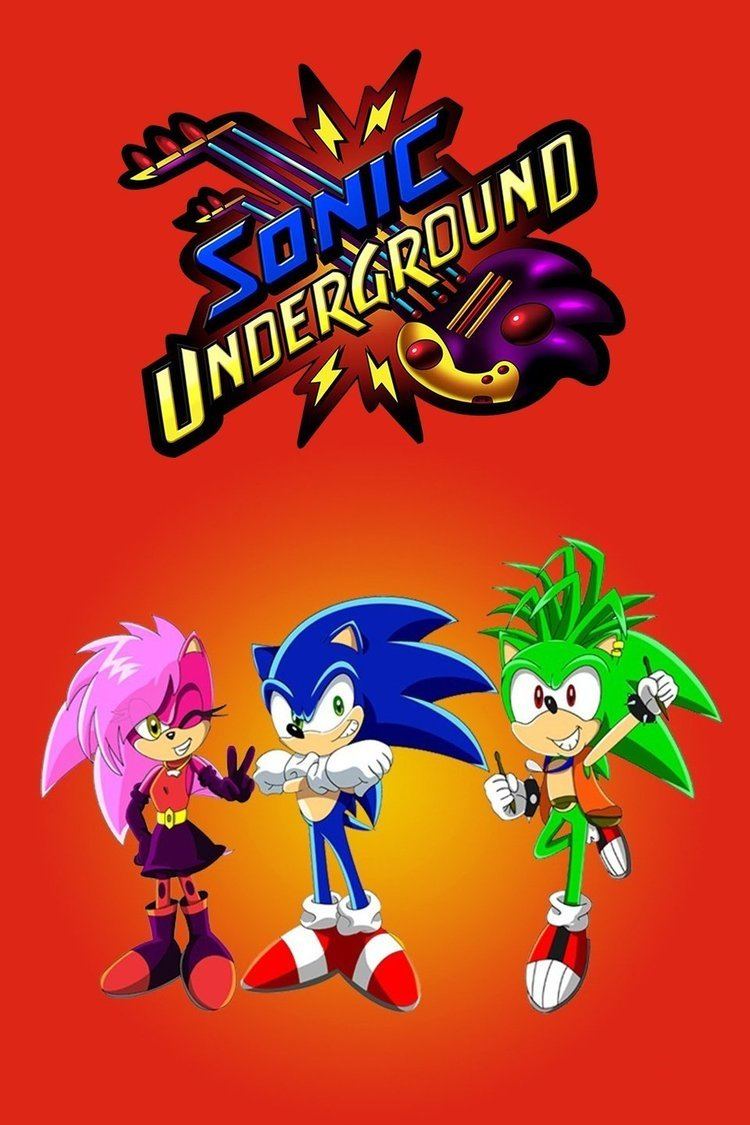 | ||||||||||||||||||||||||||||||||||
Directed by Marc BorealFrançois HemmenDaniel Sarriet Voices of Jaleel WhiteMaurice LaMarcheGarry ChalkGail WebsterPeter WildsSamuel VincentMichael StarkLouise VallanceTyley RossMatt Hill Theme music composer Robby LondonMike Piccirillo Cast | ||||||||||||||||||||||||||||||||||
Sonic Underground is an animated series produced by DIC Entertainment and TF1. It is the third Sonic the Hedgehog animated series, and also the last one produced by DIC; it follows a main plot separate from all other Sonic the Hedgehog media, where Sonic had two siblings, Sonia and Manic, that were collectively part of a royal family who were forced to separate from their mother, Queen Aleena, upon Robotnik's takeover of Mobius due to a prophecy told by the Oracle of Delphius. It first premiered in France on 6 January 1999 on TF1, and then premiered in the United Kingdom on 2 May 1999 on ITV1 and finally in the United States in syndication on 31 August 1999 and ended on 22 October 1999. It was the first Sonic the Hedgehog television series to be sold on the iTunes Store. The show ran only for one season consisting of forty episodes.
Contents
- Sonic underground episode 1 part 1
- Plot
- Main characters
- Recurring characters
- Development
- Airing
- Releases
- Reception
- Other media
- References
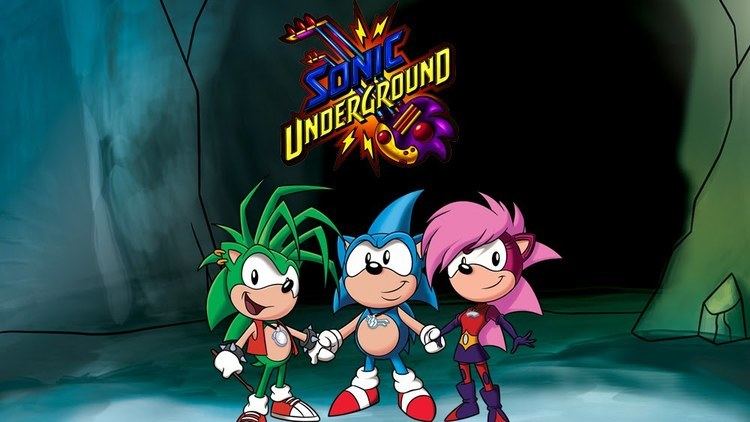
Sonic underground episode 1 part 1
Plot
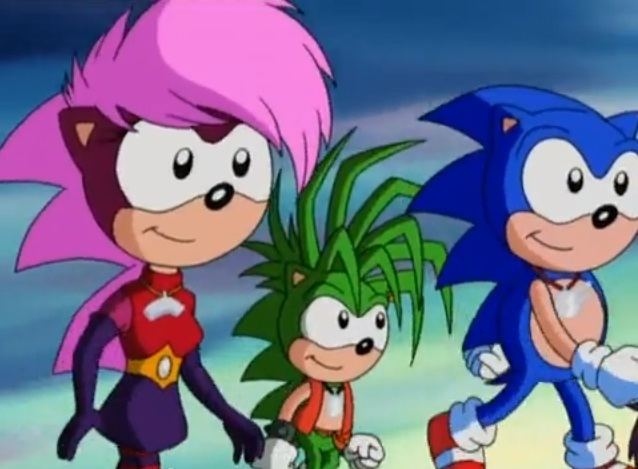
The show takes place in a separate canon and continuity than any other Sonic the Hedgehog media. Queen Aleena, the former ruler of Mobius, was overthrown by Dr. Robotnik and his lackeys Sleet and Dingo. Robotnik seized control of the planet and forced Queen Aleena into hiding. To preserve the dynasty, Queen Aleena separated her three children: Sonic, Manic, and Sonia after the Oracle of Delphius told her of a prophecy, proclaiming that one day, Queen Aleena would reunite with her children to form the "Council of Four," and overthrow Robotnik. Meanwhile, Dr. Robotnik did his best to set up an autocratic government, and legally turned anyone who stood against him into robots devoid of freewill, and forced the nobles into paying large amounts of money to him as tribute.
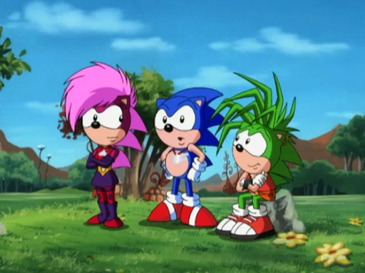
When Sonic, Manic, and Sonia grew up, the Oracle of Delphius revealed the prophecy to them. After that, Sonic, Manic, and Sonia decided to go on a quest, searching throughout Mobius for Queen Aleena. Dr. Robotnik, with the assistance of the Swat-Bots and his bounty hunters Sleet and Dingo, tries constantly to capture the royal hedgehogs and prevent the prophecy from being fulfilled.
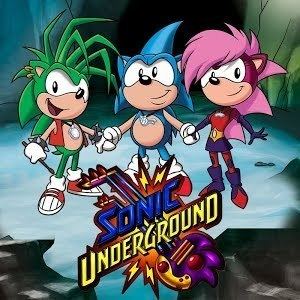
The Oracle of Delphius has assigned the three siblings powerful "medallions" that can change into musical instruments, and can also be used as weapons. Sonic's medallion is an electric guitar, Sonia's medallion is a keyboard that functions as a smoke machine, and Manic's medallion is a drumset that can be used as an "earth controller" with cymbals that can deflect laserfire. All of the medallions can be used as laser guns. The three use the amulets not only to fight Robotnik's forces but to also as instruments for their underground rock band, "Sonic Underground."
Main characters
Recurring characters
Development
It is often claimed that SEGA contacted DiC Entertainment to make a new Sonic cartoon, which would help gain interest in buying their new console, the Dreamcast. Sonic Underground started production in early 1997, around the same time the development of both the Dreamcast and Sonic Adventure had started.
When the show was in development, two episodes per week were produced, and the writers felt that they were not given enough time to "tie everything together" in the plot, being limited to a three-part "Origins" saga for coherency. DIC used cattle calls to generate episode plots. Periodically, about twenty unaffiliated writers were brought into the studios to learn about the established characters and brainstorm possible plots for episodes, after which about one or two would be selected.
While it was once believed that 65 episodes were made of which only 40 aired, Ben Hurst, a main writer from Sonic the Hedgehog (dubbed SatAM by fans), who was also involved in Sonic Underground's production, stated in a chat at the Sonic Amateur Games Expo 2008 that only 40 were produced.
Airing
Sonic Underground first premiered in France on 6 January 1999 and aired on TF1 on the TF! Jeunesse block on Wednesdays and Sundays. The show later premiered in English in the UK on 2 May 1999 and aired on ITV1 on Sunday mornings. ITV1 aired the first 18 episodes in the original UK run before cancelling the show.
In the United States, Sonic Underground premiered on 30 August 1999 (one day after the show was cancelled in the UK) and aired on the Bohbot Kids Network syndication block on weekday mornings at 6:00 AM Central Time. It ran for one season from 30 August 1999 to 22 October 1999. On the Sci-Fi Channel (formally part of the Bohbot Kids Network), the episodes that were supposed to air on Fridays were skipped because Double Dragon and later King Arthur and the Knights of Justice were airing instead, therefore only airing 32 of the 40 Sonic Underground episodes.
Sonic Underground was later rerun. In the United Kingdom in 2005, Sonic Underground aired on Pop, which has also aired Adventures of Sonic the Hedgehog on its sister station Kix!. Between 2005 and 2006, it aired on ITV2 on the Action Stations! block. On 19 January 2006, CBS announced a multi-year deal with DIC to broadcast some of their shows on the "CBS's Secret Saturday Morning Slumber Party" segment, including Sonic Underground. In 2009, reruns of Sonic Underground aired on Firestone Communications' Sorpresa, a Hispanic children's station (Channel 850 on Time Warner Cable) in the United States, were broadcast audio-dubbed Latin Spanish episodes. In 2011, the show was broadcast by KidsCo. Re-runs of the series aired on Disney XD starting 11 June 2012. This makes it the second time a Sonic the Hedgehog cartoon airs on a Disney-themed channel with the first being Adventures of Sonic the Hedgehog on Toon Disney.
In South Africa, Fox Crime had originally planned to air Sonic Underground on 21 August 2015 as Case File Toon service of DStv, TopTV, SpaceTV, My.T and ZAP, but has got put on hold.
Releases
The complete Sonic Underground series, comprising all 40 episodes on 10 DVDs, was released by Anchor Bay in the UK, compatible only with region 2 players. The entire series was re-released by Delta, who released a 4 disc DVD set with a 5th DVD containing bonus features for region 0 players. In return the entire series was re-released by GO Entertain, in the UK, compatible only with region 2 players.
Shout! Factory and Vivendi Entertainment have released the complete series on DVD in Region 1 (NTSC) in two volume sets. Volume 1, simply entitled Sonic Underground, was released on 18 December 2007. It contains the first 20 episodes of the show on three discs; a bonus fourth disc is an audio CD containing eight songs from the series, including the opening theme. Sonic Underground: Volume 2 was released on 17 June 2008, featuring the remaining 20 episodes. In May 2013 NCircle Entertainment released Volume 1 along with many of the older SEGA and Nintendo cartoons that were already released by Shout Factory. Most of the newer NCircle's releases are copies of the Shout Factory versions.
As of August 2015, Sonic Underground is available on Netflix and the iTunes Store.
Reception
Sonic Underground received mixed reviews: it was criticized for its complex plot and large amount of differences from the games, although some critics have defined the music as catchy. David Cornelius of DVD Talk said "While many Sonic fans did not take too well to all the changes, preferring the original "Sonic" cartoon to this stranger, sometimes darker, sometimes sillier incarnation, the series did win a small but loyal cult following. I fall more on the side of disappointment - for all the cleverness that went into crafting an all-new backstory, the episodes themselves are uninspired - but acknowledge the simple fact that it scores well with its target audience." GamesRadar called the show as one of "the absolute worst Sonic moments", criticizing the extra characters and the complex plot. Comedian Chris Hardwick commented on the show's theme song, composed by Mike Piccirillo, claiming that "that guy sounds like he's trying to win his exwife back." Susan Arendt of Wired said "The songs are actually kind of catchy in a Saturday morning cartoon kind of way, but the band thing still seems a bit out of place, especially when the instruments turn into weapons." Emily Ashby of Common Sense Media said "Sonic Underground has some good things to offer kids, but only if they're ready for the complexities of its story" criticizing its complex plot but complimenting its low violence and ability to entertain children. Mick Joest of Cinemablend called Sonic Underground one of the "5 Best Cartoon Bands Of All Time."
Other media
The Sonic the Hedgehog comic from Archie Comics featured a story in one of its special issues in which the Sonic Underground continuity was featured. According to the comics' plot, the reality in which Sonic Underground takes place is one of many parallel universes that share elements with Sonic's own. In the story, Sonic Prime-hailing from the main universe in the comic series-joins forces with his counterpart and siblings to stop Dr. Robotnik, who has managed to assemble a monstrous battle machine known as the Giant Borg. Robotnik obtained the pieces for this machine due to being mistaken for one of his own counterparts by Evil Sonic, an evil counterpart of Sonic's who later came to be known as Scourge the Hedgehog.
The Sonic Universe spin-off comic was originally scheduled to feature an epilogue to the unfinished Sonic Underground for its 50th issue. However, for unknown reasons this was replaced with a story focusing on one of Sonic's long-running enemies, Metal Sonic. The Underground Epilogue has apparently been put on hold indefinitely, possibly due to its lack of relevance to current Sonic games and the comic series as a whole.
